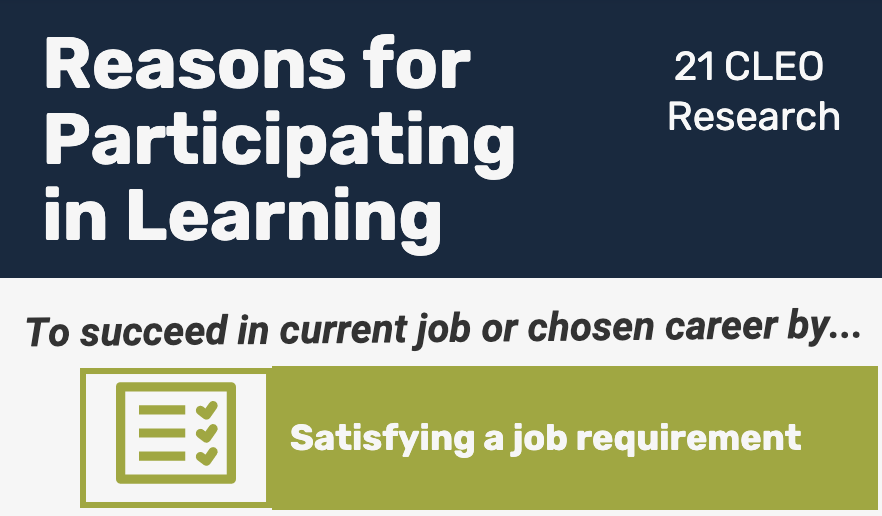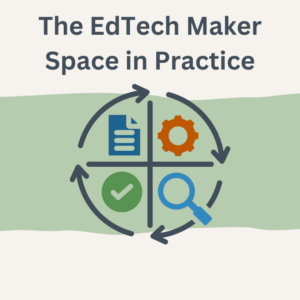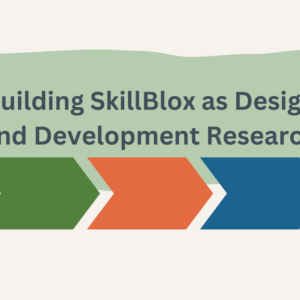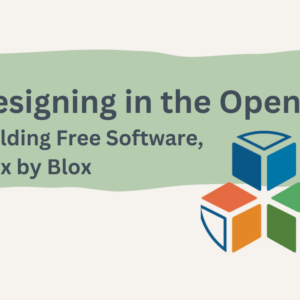By 21CLEO Research Team
Lately, we have been focused on the creation of personas, where aspects of real people are captured and blended in order to create one story that illustrates a broader representation of an end user of a technology or participant in a course. In past posts we talked about how we are using persona as a research tool and our process for creating personas. In our last post we described Neberu, who is working to feel comfortable interacting with English speakers. In the next several posts we will continue to present the personas we have created.
Understanding the reasons people participate in employer-sponsored learning
The personas that we have developed come from interviews with frontline worker learners across the country who are participating in workforce-sponsored learning opportunities. The personas illustrate that working learners have different reasons for participating in learning opportunities, as shown in Figure 1.

A more in-depth listen to the voices of working learners reveals even more diversity in motivations. In the persona presented here, we see that although Elise is required to complete training to satisfy a job requirement, she has other reasons for participating in learning. Reasons include pursuing her own career and education goals and being a good team player.
About Elise: Working hard to meet her academic and career goals
Elise works in a drugstore that is part of a national chain. She has a high school diploma and has taken some college classes; she lives in a low-income household. She views her current work as transitional, rather than an endpoint in her career. Elise has both academic and career aspirations, so the required job training she’s taking now is not the only education she’s pursuing. Although the training might fit into a career ladder in the retail pharmacy sector, she is also taking classes at the local community college. Her long term goal is to move into a different industry.

Elise’s past education, including non-credit classes in support of a childcare career, does not align with work in her current industry, so her prior learning did not prepare her for her current job. She is willing to take the training required to keep her job because it will provide more options at her current employment, and it will set her up to be a more flexible and supportive team member at work.
Elise does whatever she can to fit learning into her work and daily life. She plans her time strategically, works long hours, and completes training during work hours whenever possible. She wants to be able to do it all. For the employer-required training, she appreciates hands-on support to better understand the videos, readings, and training/coaching provided by her employer.
She often takes on too much. She is taking multiple classes (the required training and the learning more aligned with her long term goals). She also signs up for extra shifts in her current job to help pay the bills. This busy lifestyle suits her because she likes to be busy and keep moving forward, but the stress caused by the workload is intensified by a learning disability.
I like to be busy….With school I do in the morning and then I usually have a few hours in between. And I stay, you know, stay at [community college] and do my homework. And then I get dressed to go to work. Then I go home and if I have homework, still do it at home .. usually when I get home. That’s [when] I took courses for the [employer provided learning] program. Then I get up and do it again.
Elise is comfortable learning through digital technology, and may even prefer it because it makes learning more flexible. She accesses online content from her home computer or at school when her home Wi-Fi is problematic.
Elise knows she has miles to go before she reaches her long-term goals, but she has developed success strategies and self-awareness that will help her get there. For example, she knows she requires ample time to complete online training modules. She likes to ask a lot of questions, reread instructions or rewatch training videos multiple times, and take a hands-on approach to learning whenever possible. She knows she needs to rely on captions in videos to really understand. As she said, she’s “got to start somewhere” and “I can take it.” This self-talk helps get her through her busy and stressful days.
We look forward to continuing the conversation through your comments and connections.




